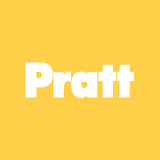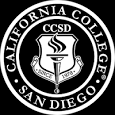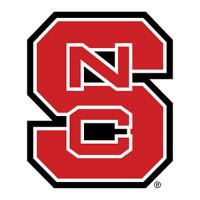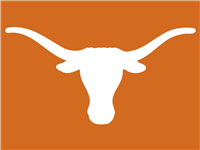What do they do?
Design and develop manufactured products, such as cars, home appliances, and children's toys. Combine artistic talent with research on product use, marketing, and materials to create the most functional and appealing product design.
Also known as:
Design Engineer, Designer, Industrial Designer, Mechanical Designer, Mold Designer, Package Designer, Product Design Engineer, Product Designer, Product Development Engineer, Sign Designer, Textile Designer, Toy Designer
-
6.1%
Change
Ranks #36 in job growth rate110Job Openings
Ranks #10 in net job growth
-
Pratt Institute-Main
Brooklyn, NY
-
Furman University
Greenville, SC
-
California College of the Arts
San Francisco, CA
-
North Carolina State University at Raleigh
Raleigh, NC
-
The University of Texas at Austin
Austin, TX
Looking for colleges that offer a specific major? Use the College Match Tool to find your best-matched schools and discover your estimated Net Price!
- Doctorate or Professional Degree (1%)
- Master's degree (12%)
- Bachelor's degree (58%)
- Associate's degree (5%)
- Some college, no degree (15%)
- High school diploma equivalent (4%)
- Less than high school diploma (4%)
Most Popular Majors that prepare Commercial and Industrial Designers
-
#1
-
Degrees Granted
466
-
Female Students
340
-
Male Students
126
-
Median Starting Salary
$45,300
-
-
#2
-
Degrees Granted
148
-
Female Students
80
-
Male Students
68
-
Median Starting Salary
$45,300
-
-
#3
-
Degrees Granted
38
-
Female Students
14
-
Male Students
24
-
Median Starting Salary
$61,100
-
-
#4
-
Degrees Granted
33
-
Female Students
24
-
Male Students
9
-
Median Starting Salary
$45,300
-
People in this career often have these skills:
- Active Listening - Giving full attention to what other people are saying, taking time to understand the points being made, asking questions as appropriate, and not interrupting at inappropriate times.
- Reading Comprehension - Understanding written sentences and paragraphs in work-related documents.
- Critical Thinking - Using logic and reasoning to identify the strengths and weaknesses of alternative solutions, conclusions, or approaches to problems.
- Complex Problem Solving - Identifying complex problems and reviewing related information to develop and evaluate options and implement solutions.
- Speaking - Talking to others to convey information effectively.
People in this career often know a lot about:
- Design - Knowledge of design techniques, tools, and principles involved in production of precision technical plans, blueprints, drawings, and models.
- Engineering and Technology - Knowledge of the practical application of engineering science and technology. This includes applying principles, techniques, procedures, and equipment to the design and production of various goods and services.
- Production and Processing - Knowledge of raw materials, production processes, quality control, costs, and other techniques for maximizing the effective manufacture and distribution of goods.
- Mechanical - Knowledge of machines and tools, including their designs, uses, repair, and maintenance.
- Computers and Electronics - Knowledge of circuit boards, processors, chips, electronic equipment, and computer hardware and software, including applications and programming.
- Mathematics - Knowledge of arithmetic, algebra, geometry, calculus, statistics, and their applications.
- English Language - Knowledge of the structure and content of the English language including the meaning and spelling of words, rules of composition, and grammar.
People in this career often have talent in:
- Fluency of Ideas - The ability to come up with a number of ideas about a topic (the number of ideas is important, not their quality, correctness, or creativity).
- Originality - The ability to come up with unusual or clever ideas about a given topic or situation, or to develop creative ways to solve a problem.
- Near Vision - The ability to see details at close range (within a few feet of the observer).
- Oral Comprehension - The ability to listen to and understand information and ideas presented through spoken words and sentences.
- Written Comprehension - The ability to read and understand information and ideas presented in writing.
- Oral Expression - The ability to communicate information and ideas in speaking so others will understand.
- Deductive Reasoning - The ability to apply general rules to specific problems to produce answers that make sense.
- Visualization - The ability to imagine how something will look after it is moved around or when its parts are moved or rearranged.
- Problem Sensitivity - The ability to tell when something is wrong or is likely to go wrong. It does not involve solving the problem, only recognizing that there is a problem.
- Information Ordering - The ability to arrange things or actions in a certain order or pattern according to a specific rule or set of rules (e.g., patterns of numbers, letters, words, pictures, mathematical operations).
- Speech Recognition - The ability to identify and understand the speech of another person.
- Speech Clarity - The ability to speak clearly so others can understand you.
- Inductive Reasoning - The ability to combine pieces of information to form general rules or conclusions (includes finding a relationship among seemingly unrelated events).
People in this career often do these activities:
- Draw detailed or technical illustrations.
- Develop artistic or design concepts for decoration, exhibition, or commercial purposes.
- Collaborate with others to develop or refine designs.
- Present work to clients for approval.
- Estimate costs for projects or productions.
- Coordinate construction or installation activities.
- Conduct market research.
- Coordinate design activities.
- Monitor current trends.
- Conduct research to inform art, designs, or other work.
- Build models, patterns, or templates.
- Develop promotional strategies or plans.
This page includes data from:

 Occupation statistics: USDOL U.S. Bureau of Labor Statistics Occupational Employment Statistics
Occupation statistics: USDOL U.S. Bureau of Labor Statistics Occupational Employment Statistics









